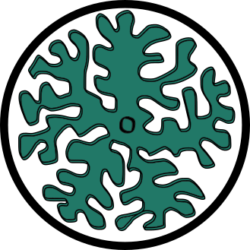Life history strategies are tuned and evolved to take advantage of the multi-scale distribution of opportunity. Life forms are adapted to compute solutions to spatial ecosystem challenges a dynamic landscape of opportunity presents.
Location, location, location
Opportunity is exploited at concrete locations which emerge as ephemeral patches in the landscape. As patches vary in quality, size and accessibility, in competition/cooperation with others, a multi-scale ecological problem emerges.
Swarming has evolve as a strategy to scale up the translocation ability (dispersal) of and organism by forming swarming structures at several scales. These critical scales are determined by the ecosystem structure (grow chamber) and the history of interactions between co-occurring organisms (development). The final result is that at a collection of critical scales, some characteristic developmental structures emerge.
Swarming surface
HomeScope is an intelligent machine designed to grow, nurture and co-evolve-with swarming microbes from all walks of life. As a population of swarming microbes develops on the grow chamber, a surface ecology emerges: vacant space, which is suitable for grow, is conquered by microbial populations which develop and expand over the surface. The expansion of coverage (conquering of territory) develops into a mature surface meta-population which give rise to the final long-term colony.
The multi-scale cell biophysics, landscape ecology, and biology of colony development provide a framework to understand wetware dynamics in HomeScope’s grow chamber. As iterations make generations of cells adapt to the chamber, directional evolution and adaptation is expected. As HomeScope operation is coded by genetic algorithms, co-evolution between hardware and wetware is expected.
